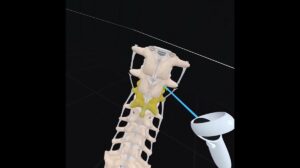NEW YORK (Reuters Health) – Serum procalcitonin is highly sensitive and specific for differentiating bacterial from aseptic meningitis in pediatric patients, physicians in Europe report in the December issue of the Archives of Pediatrics and Adolescent Medicine.
“Distinguishing between bacterial and aseptic meningitis in the emergency department could help to limit unnecessary antibiotic use and hospital admissions,” Dr. Martin Chalumeau and co-investigators note. However, “because the consequences of delayed diagnosis of bacterial meningitis can be severe, any proposed diagnostic tool must achieve near 100% sensitivity.”
Dr. Chalumeau, at Saint-Vincent-de-Paul Hospital in Paris, and his team analyzed data from retrospective studies conducted at six tertiary care centers in five countries. Besides serum procalcitonin levels, they compared the performance of blood and cerebrospinal fluid parameters for identifying bacterial meningitis.
The analysis included 198 patients ages 1 month to 16 years. Ninety-six (48%) had bacterial meningitis and 102 (52%) had aseptic meningitis.
Procalcitonin level had an area under the receiver operating characteristic curve of 0.11197, significantly higher than that for the other biological markers (p = 0.001), the authors report. A procalcitonin level of 0.5 ng/mL or higher had a sensitivity of 99% and specificity of 83% for identifying bacterial meningitis.
Although sensitivities and specificities for C-reactive protein level, CSF protein level and CSF neutrophil count were also good, they were significantly lower than for procalcitonin.
Dr. Chalumeau’s group contends that combining procalcitonin with other parameters in an effective clinical decision rule would increase specificity and avoid misdiagnosis.
Nevertheless, they add, “Validation by prospective studies is needed before procalcitonin level can be routinely included as part of a rule to decide on admission and/or treatment in cases of pediatric meningitis.”
Reference:
Arch Pediatr Adolesc Med 2008;162:1157-1163.




